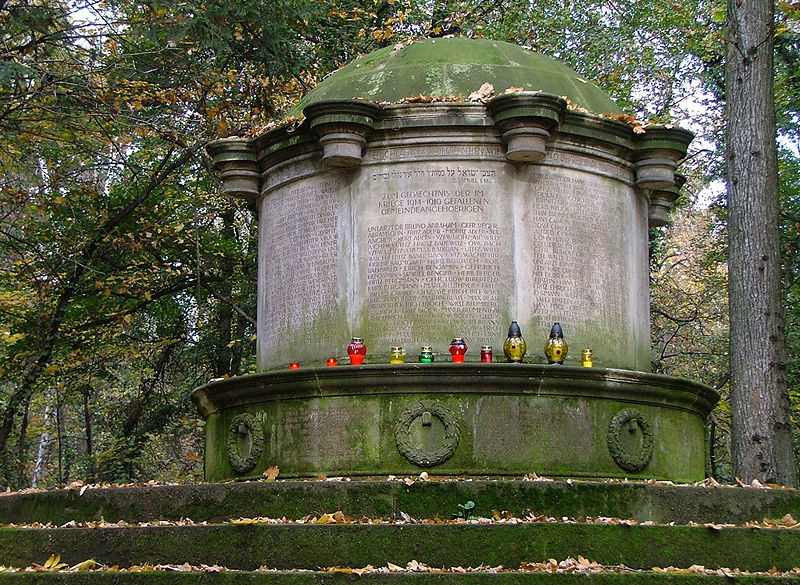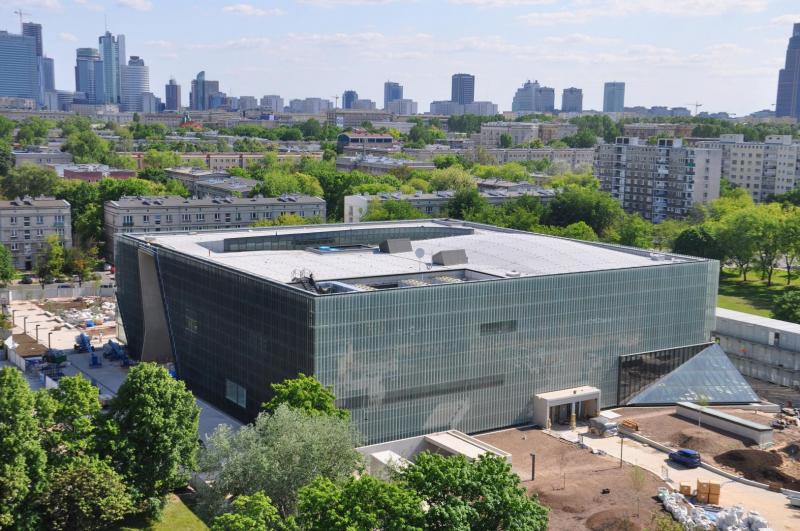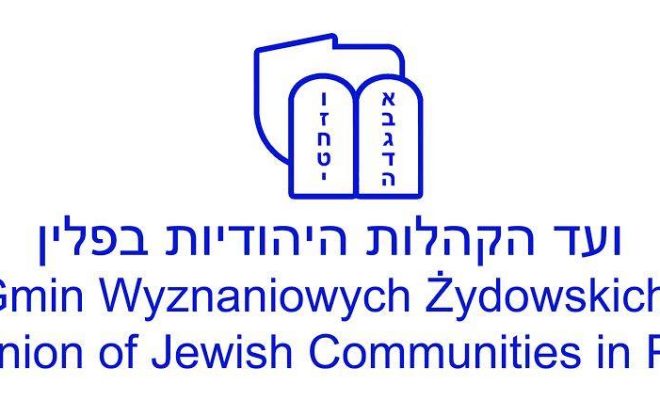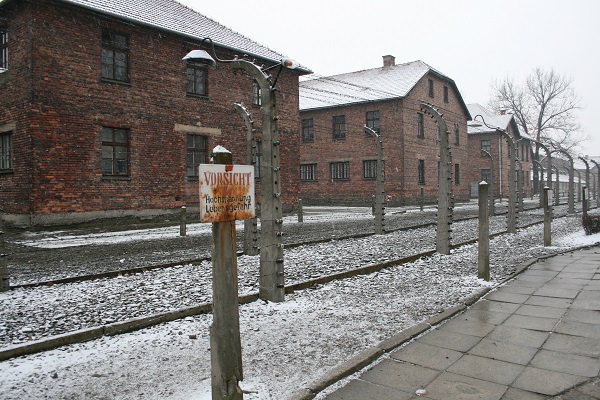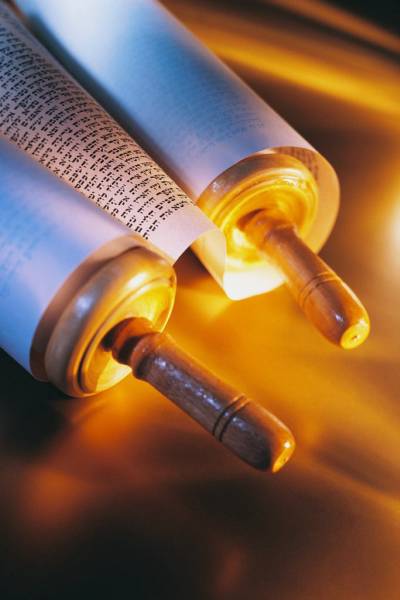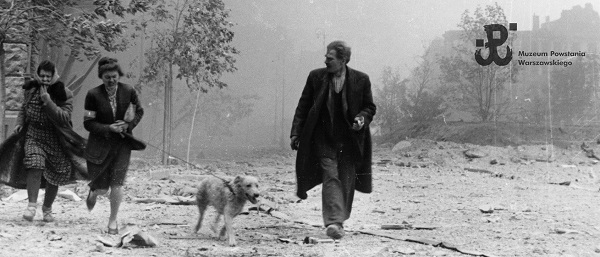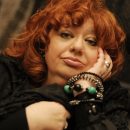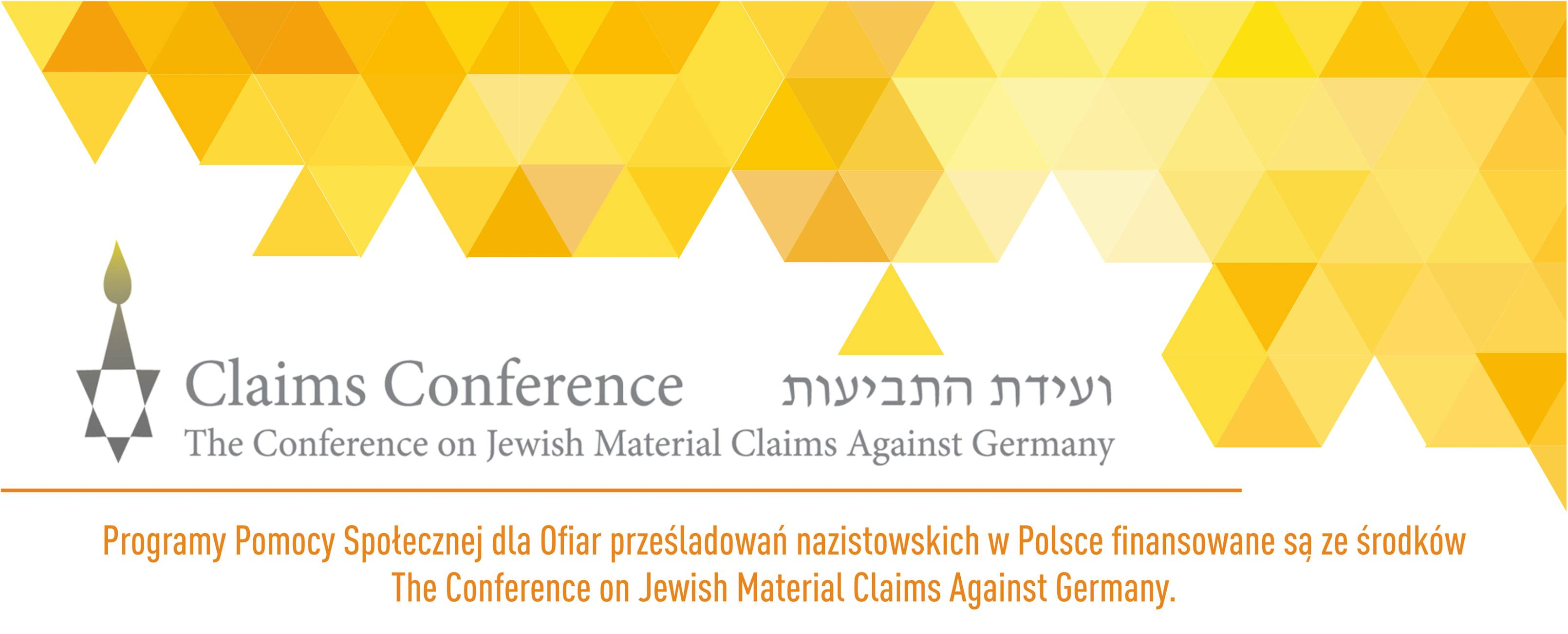Helena Datner about Museum of the History of Polish Jews
 Helena Datner is a historian and sociologist, she has also been actively involved in work for the Jewish community. She is the daughter of a women’s movement and communist activist, Edwarda Orłowska, and the famous Jewish historian, scholar of the Holocaust, and Jewish resistance fighter during World War Two, Szymon Datner. Employed at the Jewish Historical Institute, Helena Datner is also the author of many works on the social history of Polish Jews. She was the first woman elected to be the Chairperson of the Board of the Jewish Community of Warsaw. In 2007, the Institute of Applied Social Sciences at the Faculty of Applied Social Sciences and Resocialisation of the University of Warsaw granted her the PhD degree in sociology for her dissertation “The Jewish intelligentsia of Warsaw in the second half of the nineteenth century. A historical-sociological study”. For several years, she has been a member of the team responsible for developing the exhibition in the newly opened Museum of the History of Polish Jews. Together with Professor Stanisław Krajewski, she was the author of the Post-war gallery.
Helena Datner is a historian and sociologist, she has also been actively involved in work for the Jewish community. She is the daughter of a women’s movement and communist activist, Edwarda Orłowska, and the famous Jewish historian, scholar of the Holocaust, and Jewish resistance fighter during World War Two, Szymon Datner. Employed at the Jewish Historical Institute, Helena Datner is also the author of many works on the social history of Polish Jews. She was the first woman elected to be the Chairperson of the Board of the Jewish Community of Warsaw. In 2007, the Institute of Applied Social Sciences at the Faculty of Applied Social Sciences and Resocialisation of the University of Warsaw granted her the PhD degree in sociology for her dissertation “The Jewish intelligentsia of Warsaw in the second half of the nineteenth century. A historical-sociological study”. For several years, she has been a member of the team responsible for developing the exhibition in the newly opened Museum of the History of Polish Jews. Together with Professor Stanisław Krajewski, she was the author of the Post-war gallery.
Helena Datner was interviewed by Poldek Sobel, and the interview was published in Plotkies No 62, 29 December 2014.
1. Plotkies: Can you tell us how long have you been working on the Post-war gallery at the Museum of the History of Polish Jews? What have your tasks involved and what was it like to work you’re your colleagues and management at the early stages?
Helena Datner: Staszek [Krajewski] and I were “contracted” in the late 2006. We were approached by Jerzy Halbersztadt, director, and Barbara Kirshenblatt-Gimblett, chief curator. After some time, we were joined by: Justyna Koszarska, a Polish studies scholar, Artur Tanikowski, art historian, and Frank Zakrzewski, historian. We owe them a debt of gratitude, without them we would not have achieved the same results, in terms of both quality and quantity.
Our task was to describe – by explaining things in successively greater detail – what we wanted to show, and using what kind of materials. As for how to show things, we had a team of designers: the basic concept was outlined by the London-based studio Events Communication, while the Polish company Nizio finished and modified it. It is a pity that the period after 1989, designed by us and drawn by Events Communication, was not included in the final project. I will talk about it later, I just wanted to mention here that the post- 1989 part was excluded as a result of an objection of the architect, who protested against “distorting the space” of the lobby, where that part was supposed to be located, the need for spatial design changes and the resulting delay, but –it has never been expressly said, although I think that’s what it was – there was no so-called “political will” to show the great debate of the 2000s, contemporary anti-Semitism, etc. The conclusion of the exhibition should be calm and optimistic.
Going back to the beginning: it was a pleasure to work: we had the freedom of thought and the means to carry it out – research and obtain materials, consult various issues. We spent hours on substantive discussions in our team, with Barbara Kirshenblatt-Gimblett, with the Events Communication. We were taught that the languages of words and of images, so important in museum, are not the same. At that time I did not think about the possible consequences of the fact that the Museum, built in no small part for money collected by the Association of the Jewish Historical Institute, representing the Jewish party, will eventually be a state museum, maintained by the state. At one point, we were rebuked for that, very directly.
2. P: What historiosophical and historiographic concept have you developed in the Museum and what was the cooperation like between individual teams responsible for various galleries, especially regarding issues which include more than one historical period? For example, how is the problem of so-called Commie-Jew presented, or the continuity of anti-Semitic thought and deeds of the late nineteenth century until our time, and, in parallel, the anti-Jewish attitudes of the Catholic Church, both on the Polish territory and in general? Perhaps you have also shown the development of the idea of the so-called emigrationism from the times of the Second Republic of Poland until March 68?
HD: Unfortunately, people involved in developing different historical periods – parts of the Museum – were never on the same team. We worked separately. There has never been any “historiosophy” of the Museum discussed, although we did have common methodological principles, of which one of the most important and practical was: we only use voices and materials of the era, and the contemporary commentary, namely ours, is clearly separated. It was also absolutely clear to me that we were describing the world as the Jews saw it; that it is the Jewish point of view, which seems obvious and indisputable, which, however, when defined as such, at some point triggered some kind of a paroxysm in the Museum. A paroxysm of misunderstanding and fear. At the end of our work I was publicly asked not to use the term “the Jewish point of view,” because it makes the exhibition unreliable. The very name was threatening, regardless of what lay beneath it. Perhaps those who said so were afraid that people might associate it with the so-called anti-Polonism, and the Museum has to avoid it at all costs (which it indeed managed to achieve, as right-wing newspapers praised the Museum for absence of anti-Polish elements, with the exception of the Post-war gallery).
 We did not discuss the philosophy of the Jewish history. Each part of the Museum was based on the knowledge, commitment, and responsibility of people creating it. Every person involved in developing the Museum brought their own convictions and assumptions about the vision of the history of the Jews. We did not debate on “how much anti-Semitism,” or “how much about the church” there should be. Could it be otherwise? Should it be otherwise? It would probably have been difficult to find common ground, but it is clear, too, that the lack of clear-cut theses or common themes followed through history makes that history seem less harsh, so that it can be easily placed within the framework of a soft and tranquil narrative. This is my conclusion ex post, after the work.
We did not discuss the philosophy of the Jewish history. Each part of the Museum was based on the knowledge, commitment, and responsibility of people creating it. Every person involved in developing the Museum brought their own convictions and assumptions about the vision of the history of the Jews. We did not debate on “how much anti-Semitism,” or “how much about the church” there should be. Could it be otherwise? Should it be otherwise? It would probably have been difficult to find common ground, but it is clear, too, that the lack of clear-cut theses or common themes followed through history makes that history seem less harsh, so that it can be easily placed within the framework of a soft and tranquil narrative. This is my conclusion ex post, after the work.
As it happened, as far as I know, only our part, the Post-war gallery, became the cause of pressure, decisions, and atmosphere that caused that by the end of our work I had to give up working with the Museum entirely. The most contemporary gallery became the subject of special supervision.
However, in our work, we addressed firmly and clearly at least several issues where understanding of what happened later required a clear outline of the causes of earlier phenomena. A spectacular example is the notion of the “commie-Jew”. Here, we asked our colleagues working on the Interwar gallery to devote more attention to the Jewish communists – primarily their motivation for involvement with the radical movement. Extreme poverty and the terrible national oppression in the interwar period, which tends to be forgotten or disregarded … But from the point of view of the Jewish history of the interwar period, the communist movement was of marginal importance. Our request was from a different level, it was a request in terms of interest of contemporary Polish society. We wanted the communist movement to be given more space at the point of its origins because we did not intend to describe the percentage of Jewish communists in the authorities; doing so only confirms and reinforces the stereotype, suggesting that there was “something wrong” about the participation of Jews in the communist movement. That way, the debate is no longer about communism, but about the Jews. In this case, as a result of the lack of common conclusions, the participation of Jews in the communist authorities after the war has not been set within the social and psychological context, nor has it been explained.
3. P. Has there been any pressure on you and your team on the part of the management of the Museum and external factors over the past several years?
HD: Yes, these incidents were simple and clear, without mincing matters. It is interesting that the first type of pressure to appear was not political, but it came from the Jewish sponsors of the Museum. I understand that this was caused both by their personal experience and their conviction about the role of the Museum. Their point was that we devoted too much attention to the Social and Cultural Association of the Jews [TSKŻ] (“Not all Jews were members”), the newspapers Folks-Shtime and to Our Voice [Nasz Głos] (“communist newspapers, with practically no readership”), while not enough space was given to the Jews who contributed to the Polish culture. Interestingly, these very same arguments were later used by the Polish authorities. A Jew you can be proud of is a Jew “conformed”, the same as others. Showing as many „assimilated” and „known” [Jews] as possible is the story of the Jewish complexes. The thing is that we show Jewish writers and artists, such as Adolf Rudnicki, Henryk Grynberg, Stefan Nacht-Samborski and many others whose contribution is unquestionable, but, as you can see, they are never enough. And when it comes to the TSKŻ and Our Voice, that institution and the magazine played an important role at that time. We do show that.
Political pressure. Probably a lot was going on behind our backs, but the highlight was a meeting at the Ministry of Culture (remember: the Museum is subject to that Ministry, as it is funded by it) in May last year (2013), when indeed the basic framework of the exhibition had already been designed, nay, in the course of being implemented. It was directly communicated to us that our part of the exhibition “does not meet the expectations of the President and the Minister of Culture,” that it is “incompatible with the Polish raison d’etat”, and it would not be approved. After all, the exhibition is developed “for Polish money,” we heard.
We were quite shocked. There were hardly any specifics during the conversation; it was about the insufficient number of “the assimilated”, and the fact that we did not show any Jews in the “Solidarity” (we asked: Michnik? Geremek?), about the artists of the Polish Film School, too much TSKŻ, while we did not “dismantle” the “Commie-Jew” (it was probably about percentages and condemnation). Our depiction of the Kielce incident was vague.
It was a shock – because it prompted the question about the right of political power in a democratic state to interfere with the content in such a way – in the People’s Republic times, it was called “manual control.” It was a shock because there was an atmosphere of total mistrust and completely counter-dialogue. It was a shock because it happened at the last minute.
Then we worked on, there was still something to correct, change, shorten – regular work on the exhibition. Another, this time not only strong, but also effective strike came at the very end, in June (2014). We received another, this time a very detailed historical review; I talked to the reviewer and the director of the Museum, and the main issue was the Kielce pogrom and the role of the church after the pogrom. It was unpleasant; differences in points of view on matters (it would seem) long since established, but also something else, something that made me feel that it was not my place, a nasty, feeling I have not experienced for years. At the Museum Board meeting, which took place several days later, a committee was set up to correct mistakes committed in our gallery. I was not involved in its work.
4. P: What was the mechanism of such pressure? What was its source?
 HD: I think that the pressure had two sources: fear of public reaction to the mere fact of the founding of a museum of Jewish history; this theme is definitely underrated in the assessment of what is happening in the Museum and around it. Jewish issues and initiatives, even those that seem to be the most „neutral”, often provoke a real fury, as comments on the Internet indicate. Thus, the fear of public opinion. The second source is the deep conviction of policy-makers, as well as the authorities of the Museum, close to societal expectations. Although, of course, it was never expressed this way, the point was that our gallery should show the society and important institutions – the Church or “Solidarity,” in a good, or at least not the worst possible light, and place the blame for the attitude towards Jews primarily within the system and its people. However, if told in such a way, the narrative would have been obviously untrue. Society expects to condemn Jewish communists – failure to do so might apparently cause riots. It is a naive and ineffective education, in fact it is no education, an attitude fixing the status quo, not even making an attempt to change attitudes of many people.
HD: I think that the pressure had two sources: fear of public reaction to the mere fact of the founding of a museum of Jewish history; this theme is definitely underrated in the assessment of what is happening in the Museum and around it. Jewish issues and initiatives, even those that seem to be the most „neutral”, often provoke a real fury, as comments on the Internet indicate. Thus, the fear of public opinion. The second source is the deep conviction of policy-makers, as well as the authorities of the Museum, close to societal expectations. Although, of course, it was never expressed this way, the point was that our gallery should show the society and important institutions – the Church or “Solidarity,” in a good, or at least not the worst possible light, and place the blame for the attitude towards Jews primarily within the system and its people. However, if told in such a way, the narrative would have been obviously untrue. Society expects to condemn Jewish communists – failure to do so might apparently cause riots. It is a naive and ineffective education, in fact it is no education, an attitude fixing the status quo, not even making an attempt to change attitudes of many people.
(To explain: We show the full extent of Jewish communists’ actions on “the Jewish territory.” Those working in the “national” territory went there as communists, not as Jews. We are not hiding them – far from it, in fact – what we wanted, however, was to show that their Jewishness had nothing to do with anything in that case).
5. P: Can you give specific examples of what changes have been made in the Post-war Gallery as a result of such pressures?
HD: Yes, some changes important for us are:
– an eminent Polish historian said that we could not use the term “just social system,” even in the following sentence: “many Jews who did not leave Poland immediately after the war hoped that the new system would be just, that it would bring real equality of the Jews”,
– we could not include too many anti-Semitic leaflets issued by the Polish anti-communist underground (they had to be placed where we explain the reasons for Jewish support for the regime), leaflets could not be labelled with the name of the grouping that published them,
– removed from the same place – (where the reasons for the support of the regime are discussed), Maria Dąbrowska’s anti-Semitic entry in her diary – in fact, the writer wrote terrible things about Jews; that entry was meant to illustrate the attitude of part of the intelligentsia to the Jews,
– Photographs of the leading figures of the Communist Party (1948) require resumes which clearly define them as Jews,
– We had to change a quote that said that in March the authorities and the society were joined by their anti-Semitism, to a quote said nothing of such shared views.
6. P. In your opinion, does the Museum (or the post-war part) show the “Jewish perspective” and do you think that the historical information sufficiently shows not only the bright side of Jewish life in Poland?
HD: Despite the changes listed above, there were and still are “dark” areas: the post-war violence, including the Kielce pogrom (although harsher quotes, interpreting the cause of the pogrom have been changed for “milder” ones), a huge wave of post-war immigration, followed by another at the turn of the 1940s and 1950s, the anti-Semitism of October 1956, March 1968 – here, despite the changes the message presenting March as the exile of Jews from Poland remained. I told you that the post-1989 part is almost non-existent, we had no impact on its present form. Contemporary Jewish life is presented as a colourful, tranquil kaleidoscope, the state of society when it comes to the Jews, debates of the last several years, the contribution of Polish artists in the debate “on the Jews” – all that is missing. It remains on paper.
7. P: Has the Polish and / or the worldwide press presented the founding of the Museum in the right way?
HD: Regardless of the changes and pressures, the exhibition is an instrument that can be used in many ways. It is extremely rich in content, various fragments of Jewish life and history have been shown in a thoughtful and resourceful way, carefully and – in some cases – very attractively visually. As for the relations with the environment, it probably depends on the gallery, on that individual sense I have mentioned at the beginning.
In addition to the exhibition itself, also very important is the narrative about the exhibition which is or will be told by guides, and the general narrative, accompanying it in the media; these narrative give the whole thing its tone and affect the perception of what is on display. Unfortunately, the stories accompanying the opening of the Museum, both domestic and foreign, did make a huge impression on me, albeit a negative one: I have not imagined that it is possible to say so little, to replace an analysis of the history of the Jews with just a handful of words that quickly became key-words, and that the entire issue can be replaced with apologetics. Apologetics of Poland, which, unlike other countries, is free from anti-Semitism, as indicated by the very fact of the opening of the Museum. Apologetics of the millennium of mutual relations, which, except for brief moments, were such that Poland was “Po-lin,” “rest here,” a country better for Jews than any other. Finally, an apologetics of the Museum itself, which, in contrast to the majority of Jewish museums in the world, is dedicated to life, and not martyrdom or destruction. “The Museum of life” could be heard everywhere. I heard that – among other things – it was so as not to show the Jews as “the eternal victim” because this is a stereotype, and a tedious one at that. It is such a silly phrase; once again a show of Jewish complexes, releasing those who persecuted Jews from taking responsibility. To show Jewish life – of course, but where did the Shoah come from? And why have the Jews always occupied the “dangerous spot” in the society? Is the answer to these questions still not a major challenge –educational, moral, and civilizational? And is this in contradiction to the significance and character of Jewish culture?
8. P. Do you still think that the placement of a monument dedicated to the Righteous Among the Nations near Museum is objectionable? Why?
HD: Yes. For me, from the very beginning the primary argument against it was my absolute certainty that the monument is meant to protect the Museum against evil tongues, to make people who go in have no doubt that the Museum “is not anti-Polish” and that everything is OK. We do not realise this, as I said, how much (at least for some time, it may also be the extremely strong fear of the current team) people feared the Museum. The Righteous are here hostages of something completely unrelated.
We would like to thank Helena Datner and Poldek Sobel for the opportunity to publish this interview at Jewish.org.pl.
Katarzyna Markusz, editor-in-chief.
* Plotkies – newspaper published by the Jewish community of March emigrants.

